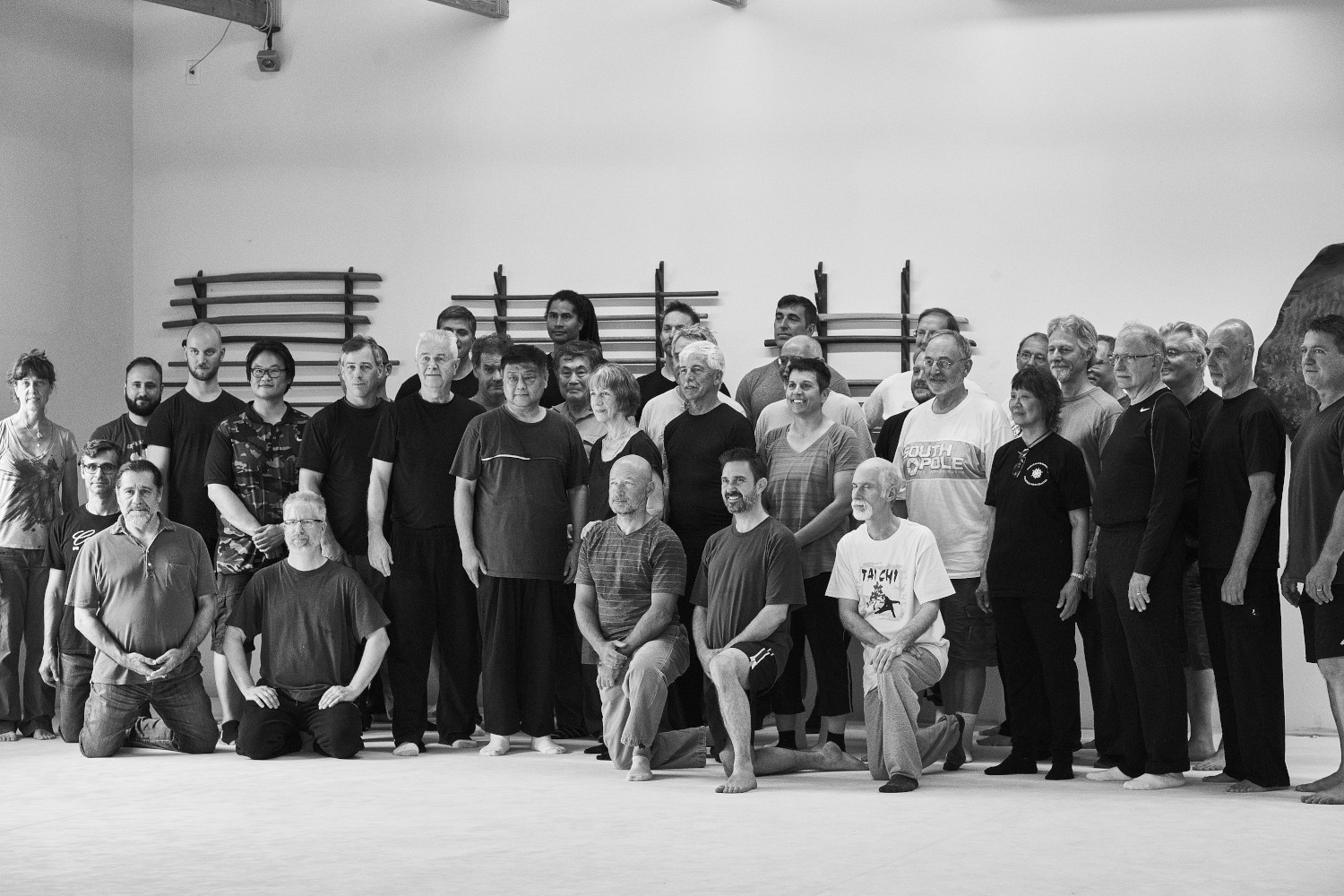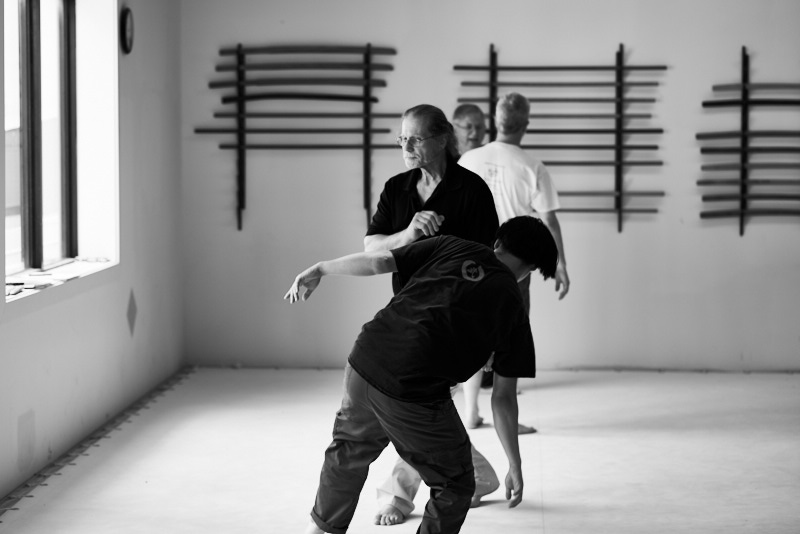2017 Taiji Classics Seminar
Updated:
Last weekend I attended a taijiquan seminar taught by Zhang Yun organized by Paul Cote and Robert Galeone in Silver Spring, MD at Capital Aikikai. Master Zhang presented material from his recent book on Taijiquan Classics. Practitioners attended from Maryland, Virginia, Georgia, New Jersey, Pennsylvania, New York, and Colorado.


In this update, I will describe excerpts from the written description of the curriculum that was covered and offer some of my own reflections. I enjoyed the experience thoroughly and had a chance to train with people I haven't seen in some time and take a few pictures along the way.
Section 1: The Nine Points
This session details taiji’s nine points of body method that are essential for proper form structure, use in push hands, and applications. They are: chenjian, zhuizhou, hanxong, babei, guodan, liutun, songyao, choukua, and tiding. The nine points listed above, as passed down in the Wu family tradition, are based in part on the classical Shen Ba Yao (or Eight Key Points of Taiji) by Wu Yuxiang.
The nine points describe proper body structure and posture needed for Taiji applications to be effective. When applications wind up difficult, it often a case that the pracitioner is not relaxed, and may be forgetting to apply one or more of these nine key points.
Session 2: The Four Word Secret Formula
This session will begin by covering the most basic taiji principle important in form movement, push hands, and applications called xu and shi (or insubstantial and substantial). The Sizi Mijue (or Four-Word Secret Formula) from the classic by Wu Yuxiang are: fu, gai, dui, and tun. These four principles relate to the progressive and correct timing in the application of taiji skills used in fighting when detecting force released by the opponent.
When attacked strongly, there are different timings one may encounter when responding. Different types of power are used depending on the relative timing of an attack and response. This affects the expression of the response. Xu and Shi have many layers of meaning and it was good to see several clear examples of insubsantial and substantial feeling in Taijiquan.
For example, a large diffuse force can interrupt the beginning of an attack, while a piercing direct force can be used to interrupt an attack as it is being expressed.
Session 3: The Five Key Points of Taijiquan
The Taijiquan Wuge Yaoling (Five Key Points of Taijiquan [to guide the learner’s skill development]) are structured under the following headings: liu he jin (six-integration jin), shi san fa (thirteen methods), wu fa (five methods), ba yaoling (eight key points), and quan li fa (wholebody-force method). Of these, Master Zhang will cover ideas from six integration jin (ninguo, zuanfa, luoxuan, bengzha, jingtan, dousou), seven pairs of the thirteen methods (zheng-yu, xu-shi [also discussed in Session 2], shou-fang, tun-tu, gangrou, dan-shuang, qing-zhong), and whole-body-force method (in attacking).
This material is derived from writings of Wu Menxia and are examples of taiji principles as passed down by the Yang family and appearing in a manual passed down by Niu Lianyuan, student of Yang Banhou. It is important from the perspective of describing the types of jin to be cultivated in Taijiquan practice that make Taijiquan different from other martial arts. For example, ning or "twisting" needs to be present in all expressions of jin, and force when released should be sudden and explosive.
Section 4: The Gathering of Qi
In this session, Master Zhang will cover the principles of gathering the qi in the body and its use (qilan). He will show how this gets applied as storing [he, xu] and releasing [kai, fa] qi for applications in taiji throwing [tifang]. Such principles are explained in early classics in articles like the The Five-Word Formula (Wuzi Jue) and the Secret Formula for Safang (Safang Mijue) passed down by Li Yiyu.
Today, there are many misunderstandings about basic aspects of Taijiquan as well as advanced practices. People may have developed high-level skill in martial arts, and if inspired by Taiji ideas, they may have cultivated skills that are not pure Taiji skills because they do not fully understand the meaning behind them. This can be fine -- one can be quite skilled, independent of their level of Taiji. But studying the classics can provide insight into these topics, and help a person understand what is and what is not Taijiquan. The classics are also important to study in order to understand the proper role of reverse breathing in Taiji practice and how to store and release qi for use in locking and throwing.